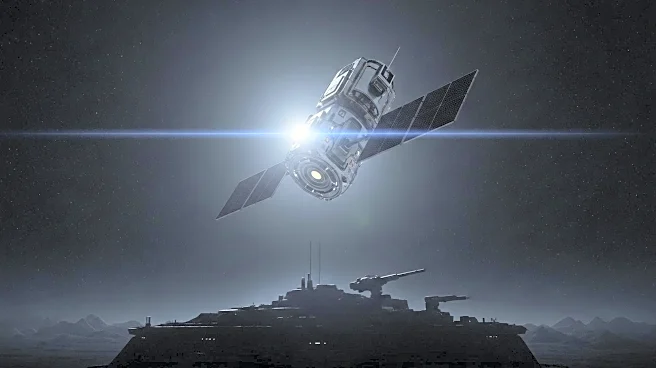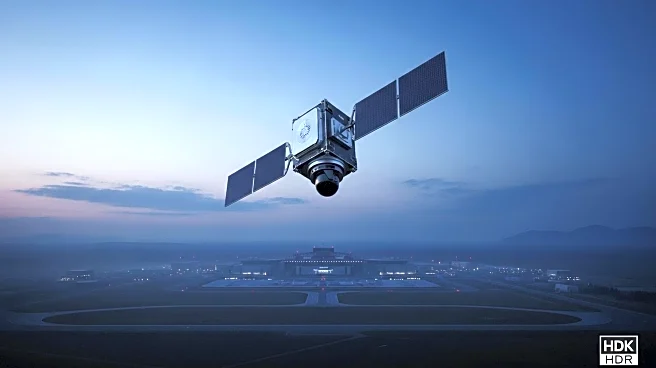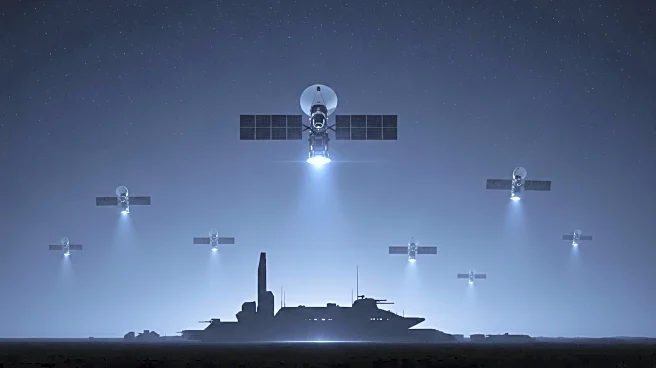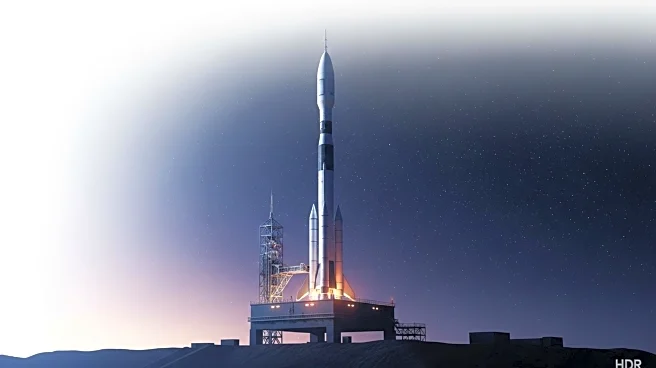What is the story about?
What's Happening?
A SpaceX Starlink satellite was captured in an image taken by Maxar Technologies' WorldView Legion Earth-observation satellite, flying over China's secretive Dingxin Airbase on August 21, 2025. The high-resolution photo shows fighter jets on the runway, with a Starlink satellite creating colorful reflections in the image. Susanne Hake, Maxar's general manager for U.S. government, described the effect as a 'pan-sharpening spectral artifact' due to the high speeds at which the satellites passed each other. This incident underscores the increasing activity in near-Earth space, though such occurrences are rare.
Why It's Important?
The event highlights the growing congestion in low Earth orbit, raising concerns about space sustainability and the potential for orbital collisions. The Starlink constellation, operated by SpaceX, has been criticized for interfering with astronomical observations due to the sunlight reflected by its satellites. As the number of satellites in orbit continues to grow, experts warn of the complexities and challenges in mission planning and space domain awareness. This incident serves as a reminder of the need for integrated space domain awareness to ensure mission success and safety.
What's Next?
As the number of satellites in low Earth orbit increases, stakeholders in the space industry may need to develop more sophisticated systems for collision avoidance and space domain awareness. The continued expansion of satellite constellations like Starlink could lead to more frequent occurrences of such alignments, prompting discussions on regulatory measures and technological solutions to mitigate risks. Space sustainability experts may advocate for international cooperation to address these challenges.
Beyond the Headlines
The incident also raises ethical and legal questions about the use of commercial satellites for surveillance and the implications for national security. The ability of private companies to capture images of sensitive military sites could lead to debates on privacy and the regulation of satellite imagery. Additionally, the artistic aspect of the image, described by Hake as 'accidental art,' may inspire discussions on the intersection of technology and art in space exploration.
AI Generated Content
Do you find this article useful?














